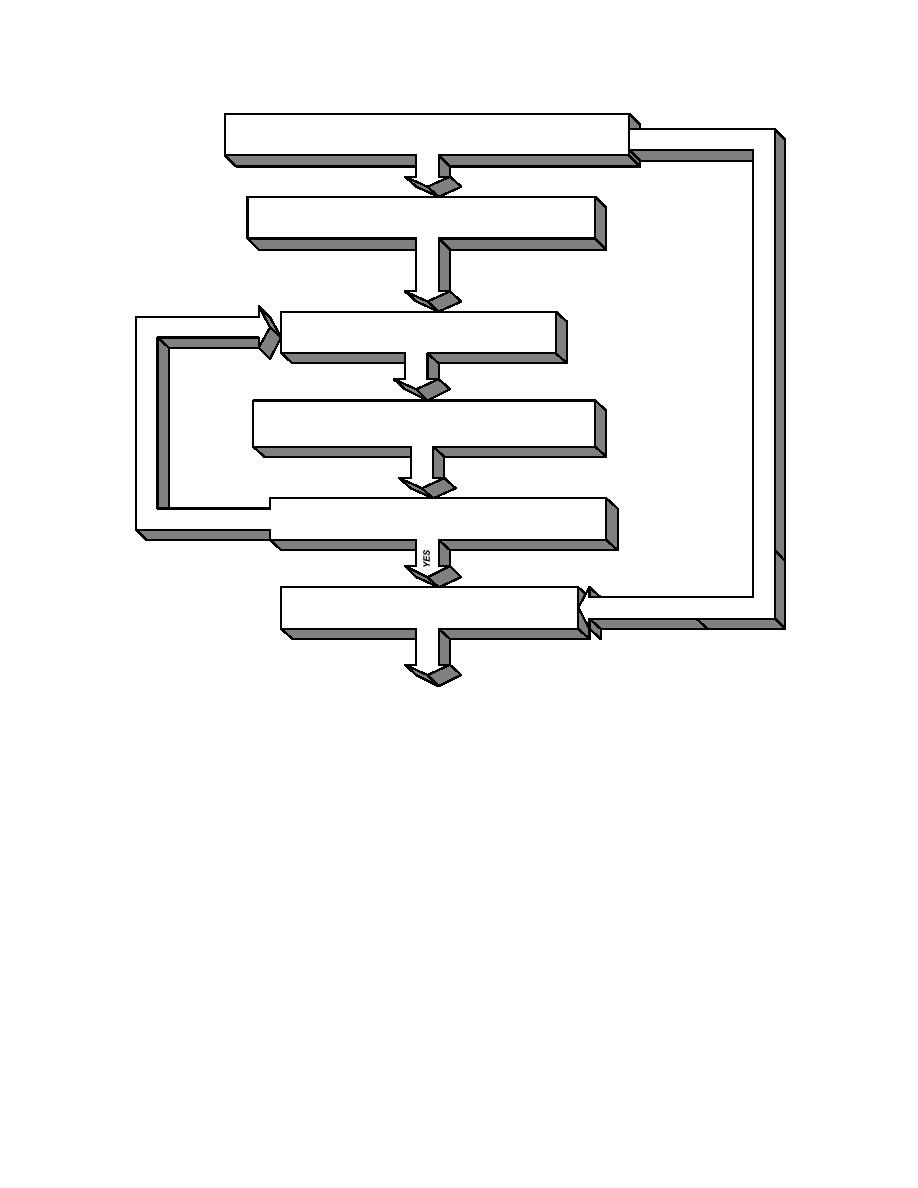
The Process
DOES SYSTEM INSTABILITY EXIST OR DO PROJECT GOALS REQUIRE
NO
MODIFIED DISCHARGE, SEDIMENT LOAD, PLANFORM, OR CHANNEL GRADE?
COMPUTE NEW CHANNEL FORMING DISCHARGE IF REQUIRED
DETERMINE STABLE CHANNEL DIMENSIONS (WIDTH,
DEPTH, AND SLOPE)
DETERMINE PLANFORM PROPERTIES (SINUOSITY, MEANDER
WAVELENGTH, AND AMPLITUDE, AND RADIUS OF CURVATURE)
NO
DOES PRELIMINARY DESIGN MEET PROJECT GOALS?
DESIGN LOCAL BANK STABILIZATION OR HABITAT
FEATURES
Figure 2.4 Preliminary Design for Channel Rehabilitation
After the geomorphic assessment is completed, the preliminary design process (Figure 2.4) is
initiated. A critical question is asked based on results from the geomorphic assessment. Does system
instability exist or do project goals require modified discharge, modified sediment yield, modified planform,
or modified channel grade? If the answer to all elements of the question is no, then the project may require
only localized treatments such as local bank stabilization or local habitat enhancement features. If the
answer to any of the elements of the question is yes, then a four step procedure with a feed back loop is
required (Figure 2.4). The first of these three steps is to compute a new channel forming discharge, if
needed. The second step is to determine stable channel dimensions of width, depth, and slope that meet
project goals of water and sediment conveyance. Empirical and computational methods for determining
stable channel morphology are discussed in Sections 5.3.2 - 5.3.8 of Chapter 5. The third of the four steps
is to implement the proper slope by determining planform properties of sinuosity, meander wavelength,
amplitude, and radius of curvature. The fourth step in this feed back loop simply asks the question "does
12



 Previous Page
Previous Page
